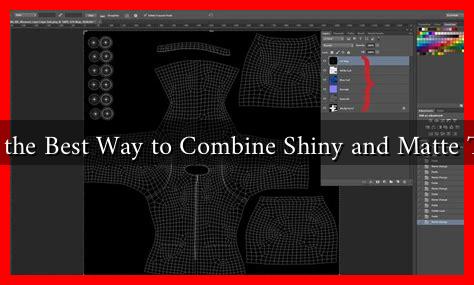-
Table of Contents
- What Is the Best Way to Combine Shiny and Matte Textures?
- Understanding Shiny and Matte Textures
- Why Combine Shiny and Matte Textures?
- Best Practices for Combining Shiny and Matte Textures
- 1. Choose a Dominant Texture
- 2. Use Color to Your Advantage
- 3. Balance Scale and Proportion
- 4. Create a Focal Point
- Case Studies: Successful Combinations
- Conclusion
What Is the Best Way to Combine Shiny and Matte Textures?
In the world of design, texture plays a crucial role in creating visual interest and depth. Combining shiny and matte textures can elevate a design from ordinary to extraordinary. This article explores the best practices for effectively merging these two contrasting textures, providing insights, examples, and tips to help you achieve a harmonious balance.
Understanding Shiny and Matte Textures
Before diving into the techniques for combining shiny and matte textures, it’s essential to understand what each texture represents:
- Shiny Textures: These surfaces reflect light, creating a glossy appearance. Common examples include polished metals, glass, and high-gloss paints. Shiny textures can evoke feelings of luxury and modernity.
- Matte Textures: In contrast, matte surfaces absorb light, resulting in a non-reflective finish. Examples include unpolished wood, matte paints, and fabrics like canvas. Matte textures often convey warmth and subtlety.
Why Combine Shiny and Matte Textures?
Combining shiny and matte textures can enhance the visual appeal of a design by:
- Creating Contrast: The juxtaposition of shiny and matte surfaces can create a striking visual contrast that draws the eye.
- Adding Depth: Layering different textures can add dimension to a design, making it more engaging.
- Highlighting Features: Shiny textures can be used to highlight specific elements, while matte textures can provide a neutral backdrop.
Best Practices for Combining Shiny and Matte Textures
To effectively combine shiny and matte textures, consider the following best practices:
1. Choose a Dominant Texture
Decide whether you want shiny or matte to dominate the design. This choice will guide your color palette and material selection. For instance, if you choose a matte finish for walls, you might opt for shiny accents in furniture or decor to create focal points.
2. Use Color to Your Advantage
Color can significantly influence how textures interact. Here are some tips:
- Choose complementary colors for shiny and matte surfaces to create harmony.
- Use a monochromatic color scheme to maintain a cohesive look while varying textures.
- Consider the psychological effects of colors; for example, gold and silver shiny textures can evoke luxury, while earthy matte tones can create warmth.
3. Balance Scale and Proportion
When combining textures, pay attention to scale and proportion. A large shiny surface can overwhelm a small matte element, and vice versa. Aim for a balanced distribution of both textures throughout the space or design.
4. Create a Focal Point
Utilize shiny textures to create a focal point in your design. For example, a shiny chandelier can draw attention in a room with matte walls. This technique helps guide the viewer’s eye and adds interest to the overall composition.
Case Studies: Successful Combinations
Several designers have successfully combined shiny and matte textures in their work:
- Interior Design: The renowned designer Kelly Wearstler often uses shiny metallic accents against matte finishes in her luxury interiors, creating a sophisticated and inviting atmosphere.
- Fashion: In fashion, designers like Balenciaga have embraced the combination of shiny leather with matte fabrics, resulting in striking and innovative collections.
Conclusion
Combining shiny and matte textures is an art that can significantly enhance the visual appeal of any design. By understanding the characteristics of each texture, choosing a dominant texture, balancing colors and proportions, and creating focal points, designers can achieve a harmonious and engaging aesthetic. Whether in interior design, fashion, or graphic design, the thoughtful integration of these textures can lead to stunning results. For more inspiration on texture combinations, consider exploring resources like Architectural Digest or Dezeen.

